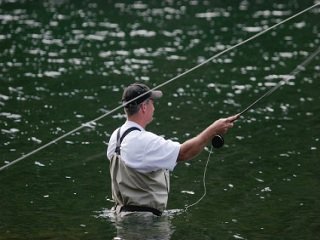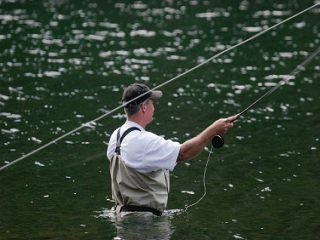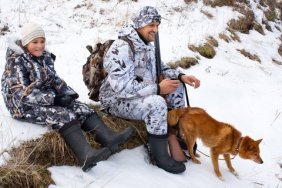 Whether you’re casually meandering along a shallow creek or braving a chest-high river for trout and salmon, waders are an essential part of any fly angler’s tackle. Just like any major piece of equipment, however, deciding on the pair best suited for you can be hard. If you keep your needs in the front of your mind, though, choosing a pair won’t take long and you’ll be out on the river before you know it.
Whether you’re casually meandering along a shallow creek or braving a chest-high river for trout and salmon, waders are an essential part of any fly angler’s tackle. Just like any major piece of equipment, however, deciding on the pair best suited for you can be hard. If you keep your needs in the front of your mind, though, choosing a pair won’t take long and you’ll be out on the river before you know it.
There are three main styles of waders to choose from: hip, waist, and chest. Hip waders are more easily worn and removed than other styles, but are designed more for shallow water and quick activities in and around the water. Hunters also use them for trekking through swampy land. Waist waders are basically pants that cover a little more of your body than hip waders. Warm-climate anglers will like the fact that they also allow your upper body to breathe. Chest waders are the most popular style, due to their versatility and range of storage options available. I’ve always felt that it’s better to have too much of something, than not enough, and chest waders definitely provide that peace of mind that allows you handle most water depths, should the need arise. In colder weather, the extra coverage will keep you warmer, as well.
So you’ve decided what style you want, now onto material. Breathables are a safe bet, especially if you plan on fishing all seasons. They’re lightweight, very comfortable, and the high-stress areas—knees and seat—are usually reinforced to add durability. When the temperatures drop, neoprene waders are a safe bet, due to their insulating technology. They are not, however, very breathable, so warm weather fishing in neoprenes will be rough. Durable and inexpensive, nylon waders are also available in light and heavy duty styles. Like neoprenes, though, they aren’t breathable. Last, but not least, are rubber waders. They’re not the most comfortable material to choose from, but they’re durable and inexpensive, which makes them a logical choice for first-timers.
Some waders are equipped with boot attachments, and some aren’t. Booted styles negate the need to purchase boots and are easy to put on and take off. If your waders don’t have boots and are equipped with a stockingfoot, then you will need to purchase a pair of wading boots. They are lighter, though, due to the fact that there aren’t boots attached to them. The stocking feet will be insulated and designed to prevent boot slippage, too.
Choosing waders isn’t a difficult task if you employ my theory on weighing your needs and how often you’ll use the produce against the cost. Consider the options for each pair; storage, material, climate, etc., and then ask questions to clear up any lingering doubts or confusion. Fishing associates want you to have fun on the water and come back with stories, so they’re always more than happy to help you find exactly what you need. Heed any advice or tips given and, once you decide on a pair of waders, enjoy the serenity and untouched beauty that accompanies standing amidst a rolling stream.








